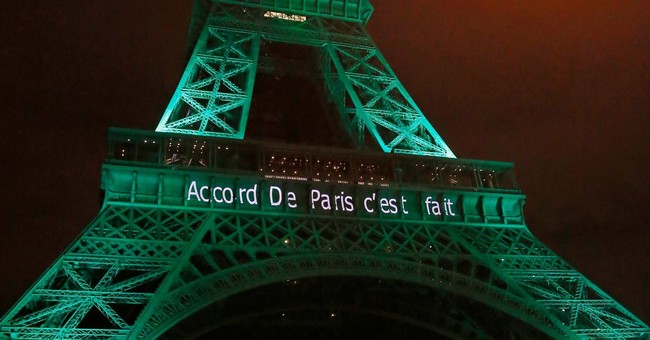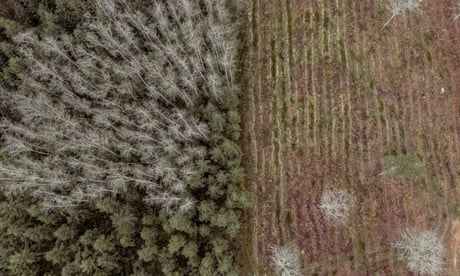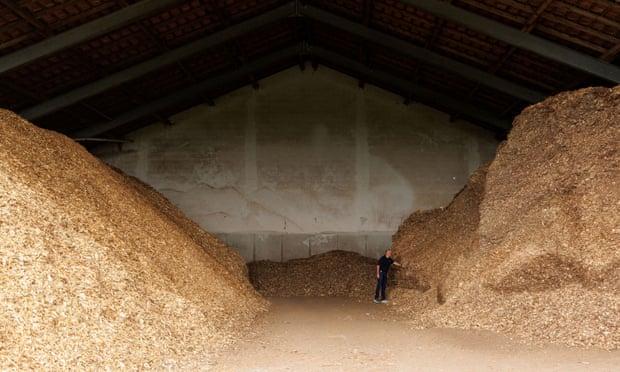Seems the NYT is one of the few covering this.
This reads like a cautionary tale on the Law of Unintended Regulatory Consequences, and to some extent it is. However, it’s just as much a tale of green-movement hypocrisy, as well as yet another lesson on the impact of incentives and artificial market interventions. The New York Times explains in a sideways manner how the EU has attempted to comply with its own Paris Accord targets for carbon-dioxide reduction by, er, wiping out the forests of the continent for conversion to power.
A very smoky kind of power, at that:
So what did producers do? Tear down whole trees … and when that didn’t work, they clear-cut old-growth forests. You know, those ancient carbon-dioxide sinks that convert the trace element from a greenhouse gas into breathable oxygen. The EU is chopping down trees to pursue the Green Utopia:
How in the world does the EU allow this contradiction to continue? Simple — they have set up another regulation with an unintended effect, as well as another perverse incentive on top of that. Wood-pellet power counts as a clean-energy source for compliance with the Paris Accord, even though it’s actually workse overall than the fossil fuels it replaces and the EU’s incentive structure resists:
This reads like a cautionary tale on the Law of Unintended Regulatory Consequences, and to some extent it is. However, it’s just as much a tale of green-movement hypocrisy, as well as yet another lesson on the impact of incentives and artificial market interventions. The New York Times explains in a sideways manner how the EU has attempted to comply with its own Paris Accord targets for carbon-dioxide reduction by, er, wiping out the forests of the continent for conversion to power.
A very smoky kind of power, at that:
Ah, market incentives. How do they work again? The EU subsidized the pellet industry, making the prices cheaper and spiking both demand and capital investment into production. However, the amount of wood waste (sawdust and chips) from other industries was clearly finite and insufficient for the incentivized demand.When the bloc began subsidizing wood burning over a decade ago, it was seen as a quick boost for renewable fuel and an incentive to move homes and power plants away from coal and gas. Chips and pellets were marketed as a way to turn sawdust waste into green power.
Those subsidies gave rise to a booming market, to the point that wood is now Europe’s largest renewable energy source, far ahead of wind and solar.
But today, as demand surges amid a Russian energy crunch, whole trees are being harvested for power. And evidence is mounting that Europe’s bet on wood to address climate change has not paid off.
So what did producers do? Tear down whole trees … and when that didn’t work, they clear-cut old-growth forests. You know, those ancient carbon-dioxide sinks that convert the trace element from a greenhouse gas into breathable oxygen. The EU is chopping down trees to pursue the Green Utopia:
Forests in Finland and Estonia, for example, once seen as key assets for reducing carbon from the air, are now the source of so much logging that government scientists consider them carbon emitters. In Hungary, the government waived conservation rules last month to allow increased logging in old-growth forests.
How in the world does the EU allow this contradiction to continue? Simple — they have set up another regulation with an unintended effect, as well as another perverse incentive on top of that. Wood-pellet power counts as a clean-energy source for compliance with the Paris Accord, even though it’s actually workse overall than the fossil fuels it replaces and the EU’s incentive structure resists:
And while European nations can count wood power toward their clean-energy targets, the E.U. scientific research agency said last year that burning wood released more carbon dioxide than would have been emitted had that energy come from fossil fuels.





